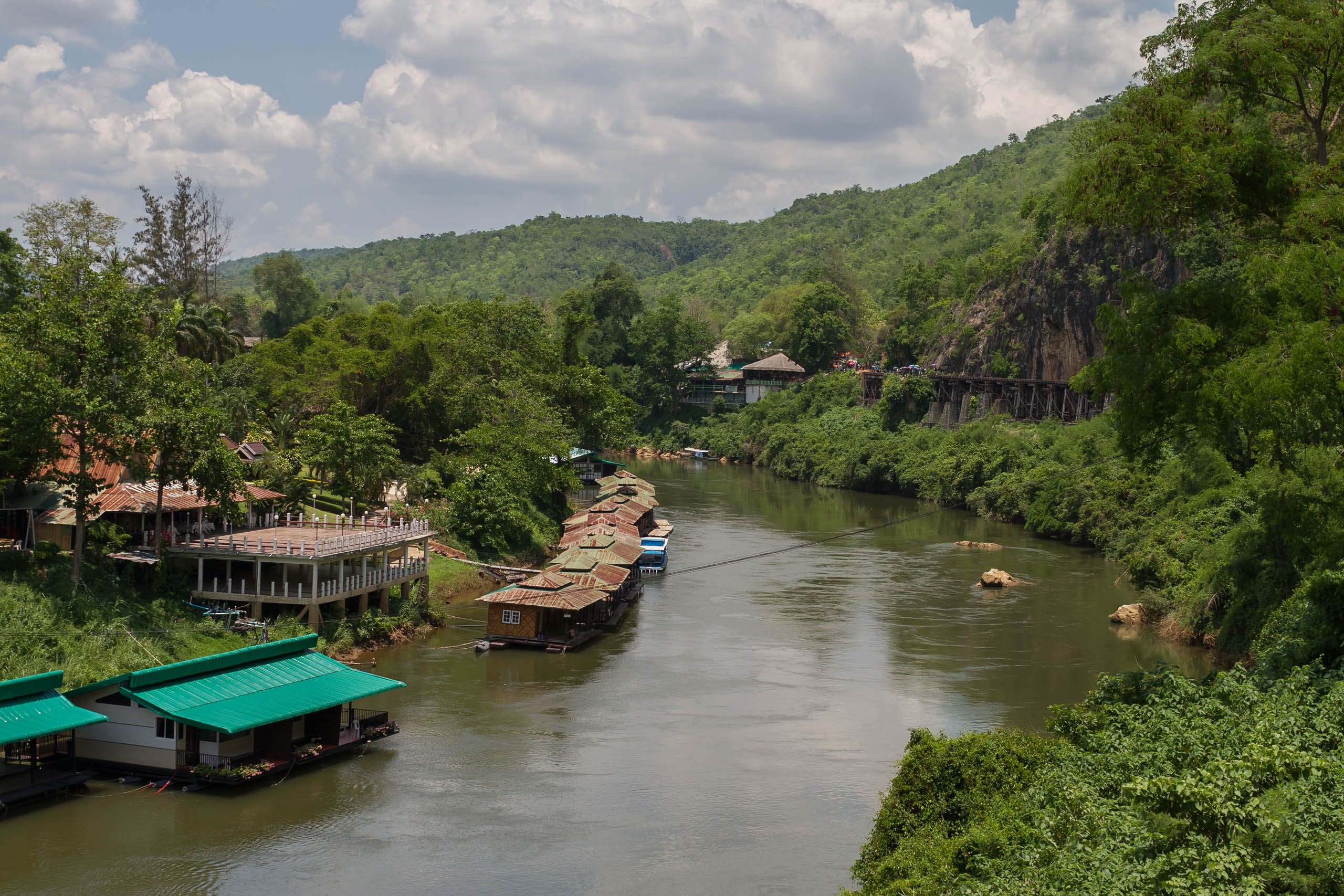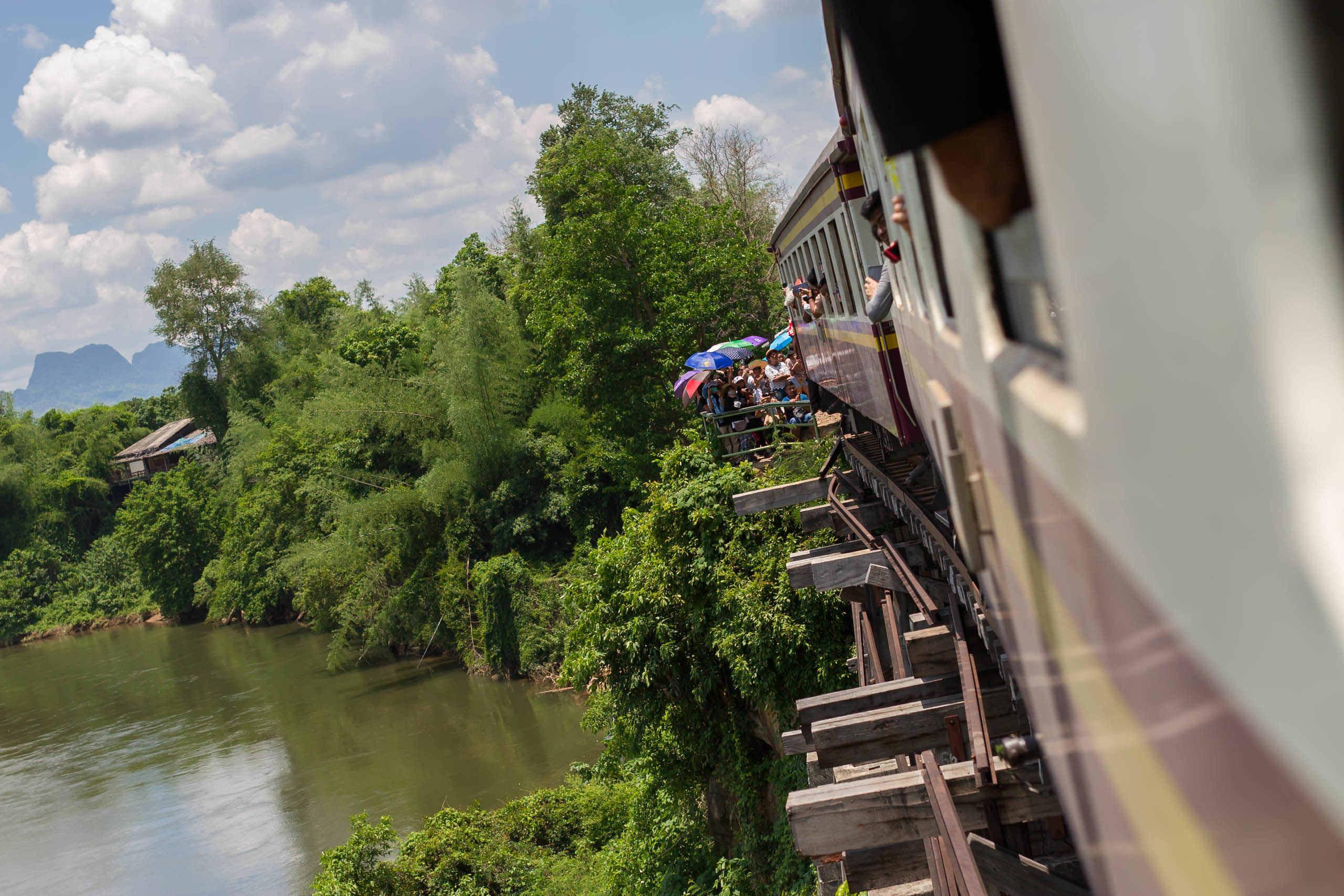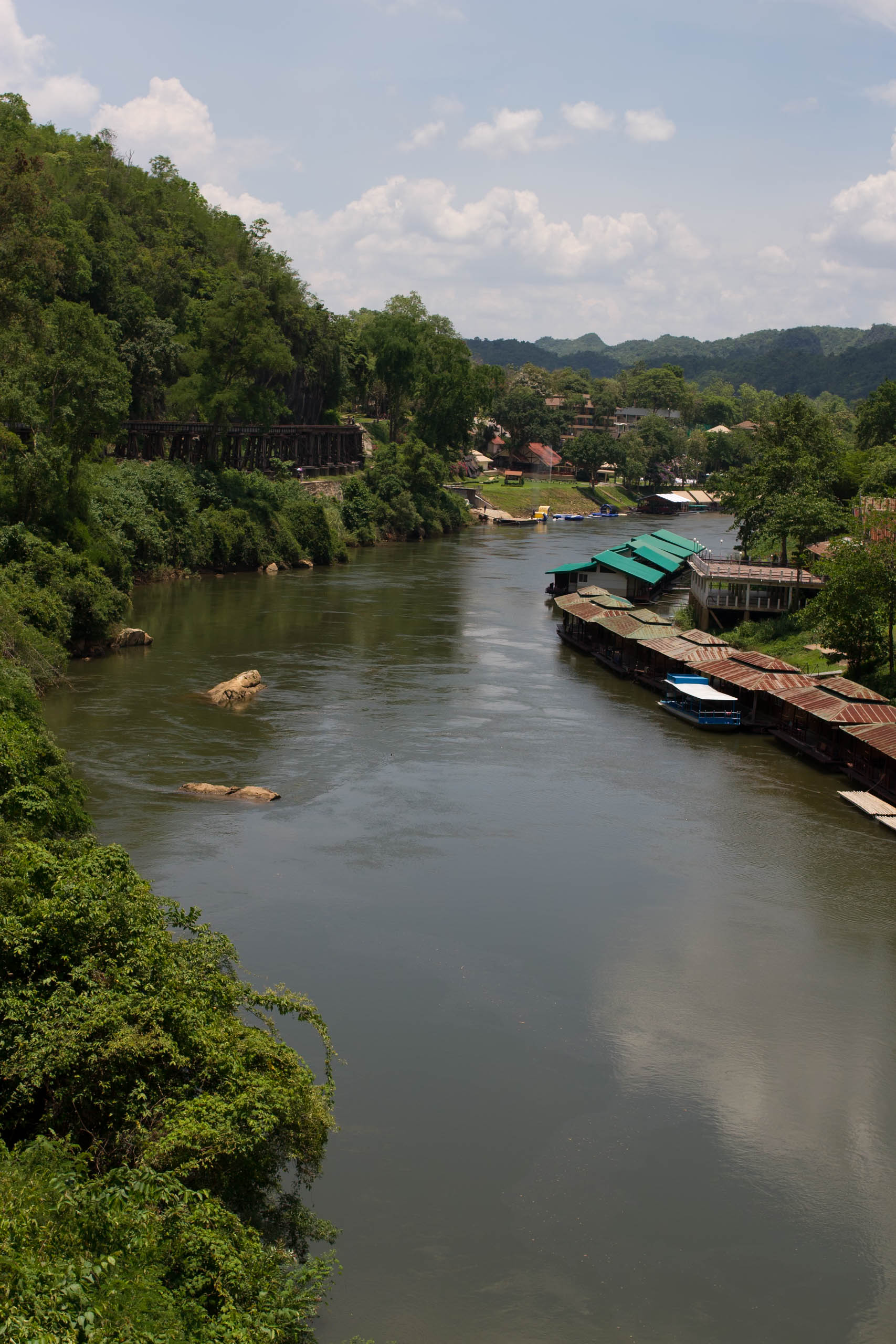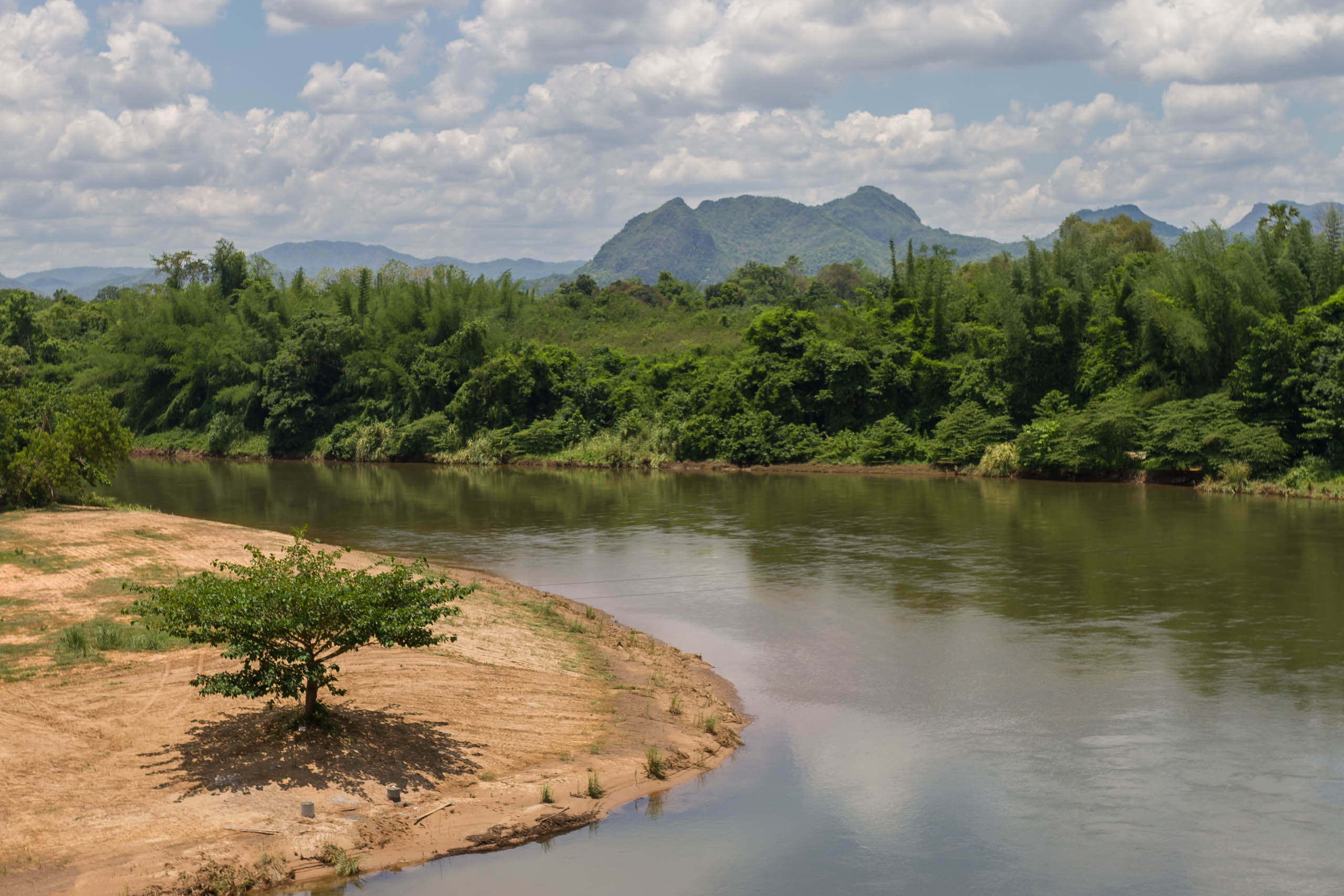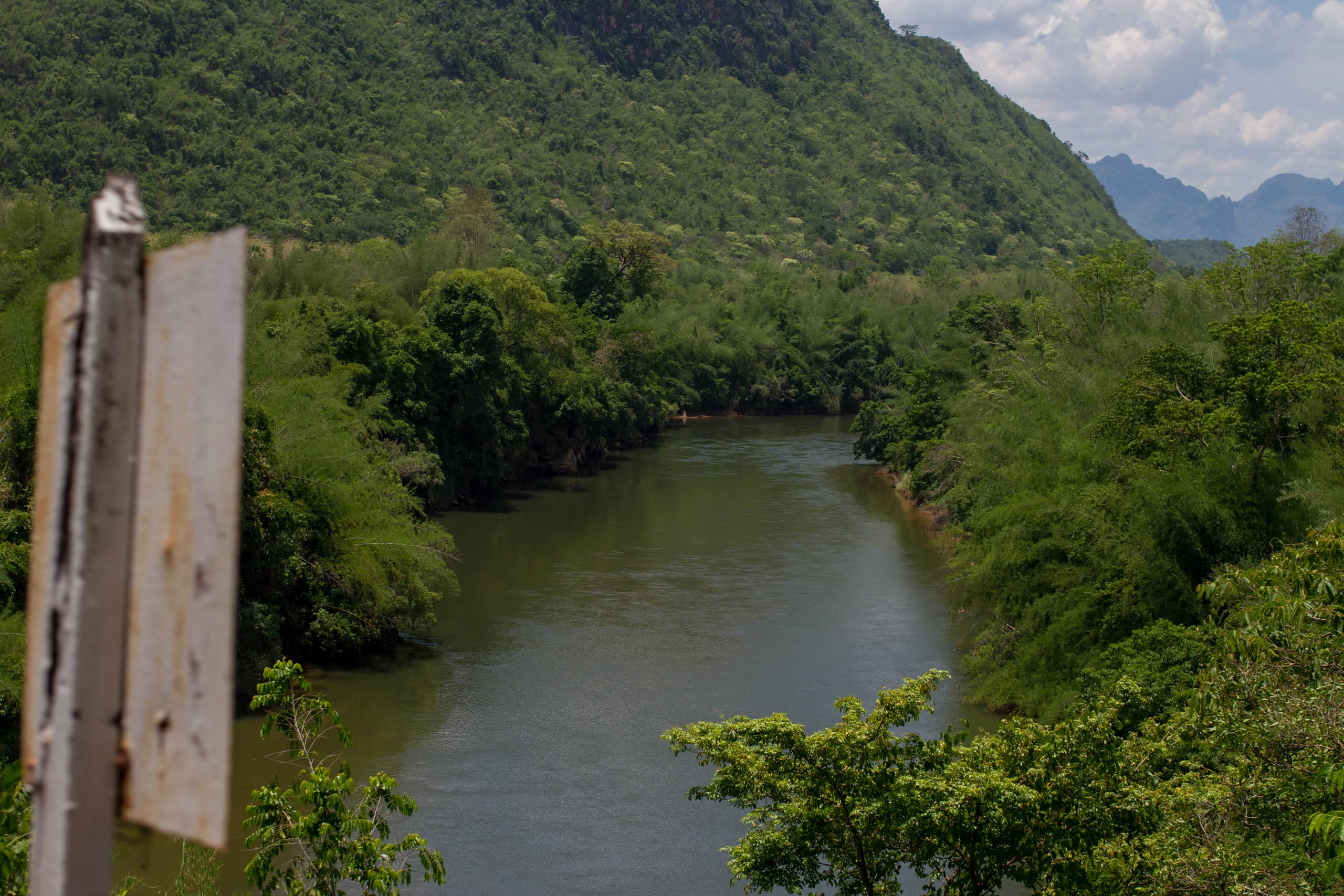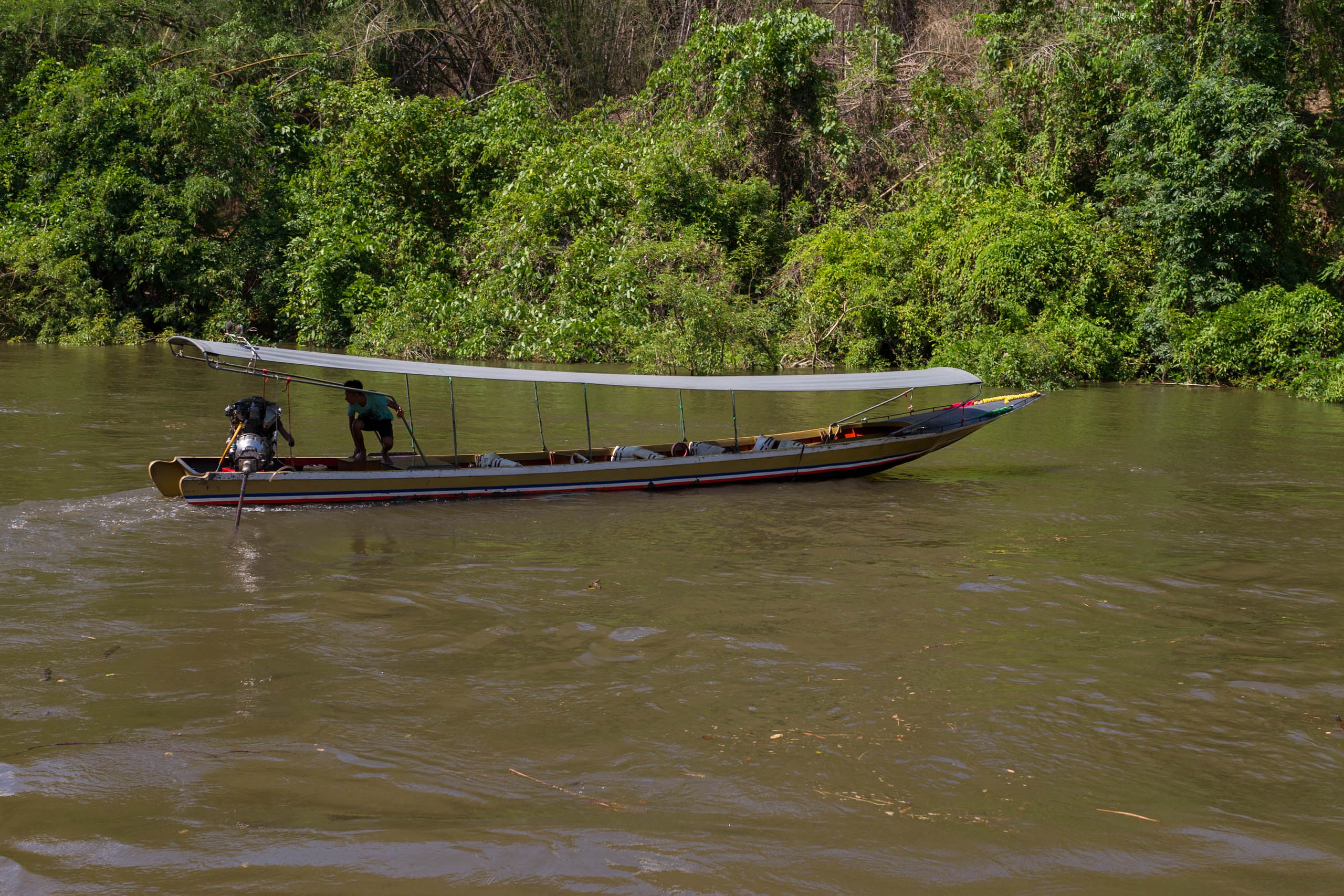The River Kwai - แควน้อย
River Kwai
Immortalized by the famous film, the River Kwai flows through Kanchanaburi province and represents both a historic memorial site and a peaceful natural environment, bordered by forests and mountains. It is today a popular destination combining history, nature, and relaxation.
A Symbol of World War II
The River Kwai was at the heart of the Thailand-Burma Railway project, built between 1942 and 1943 by Japanese forces using Allied prisoners of war and Asian forced laborers. The extreme working conditions cost the lives of over 100,000 people.
Places to visit:
- The River Kwai Bridge, still in service.
- The JEATH War Museum and the Thailand-Burma Railway Interpretation Center.
- The Allied Military Cemetery in Kanchanaburi.
- Hellfire Pass, a moving site of hand-cut rock excavation.
A Peaceful River Today
The River Kwai crosses lush landscapes:
- Opportunity to stay in floating bungalows, rocked by the current.
- Kayak excursions or peaceful cruises.
- Wildlife observation: monkeys, birds, butterflies along the banks.
- Magnificent sunsets against wooded hills.
Between Memory and Escape
This contrast between the violence of history and the serene beauty of the landscape gives the River Kwai a unique atmosphere. It is a place to remember, but also to recharge.
Access
- About 2.5 hours by car from Bangkok.
- Accessible by historic train, crossing dizzying viaducts.
- Possible to combine with visits to Erawan or Sai Yok, two nearby national parks.
Conclusion
The River Kwai is both a poignant memorial site and a tropical nature retreat. It embodies a less touristy, deeper Thailand where history and beauty quietly coexist.
The River Kwai, its bridge and railway!
